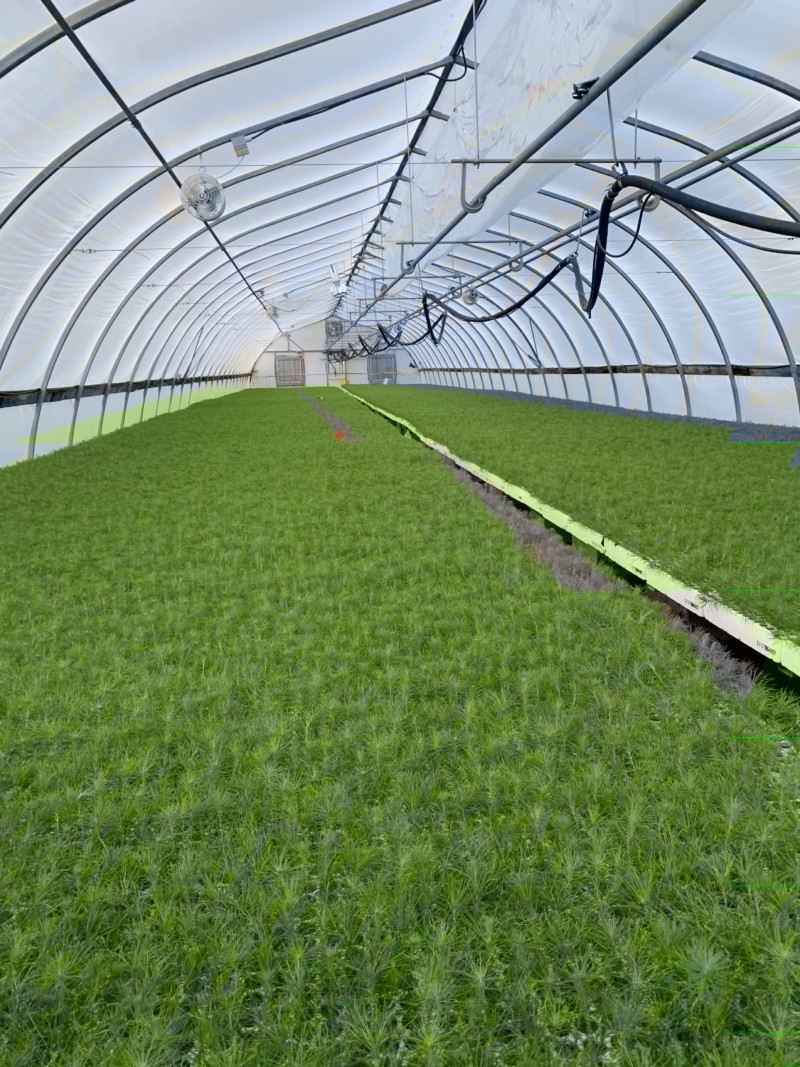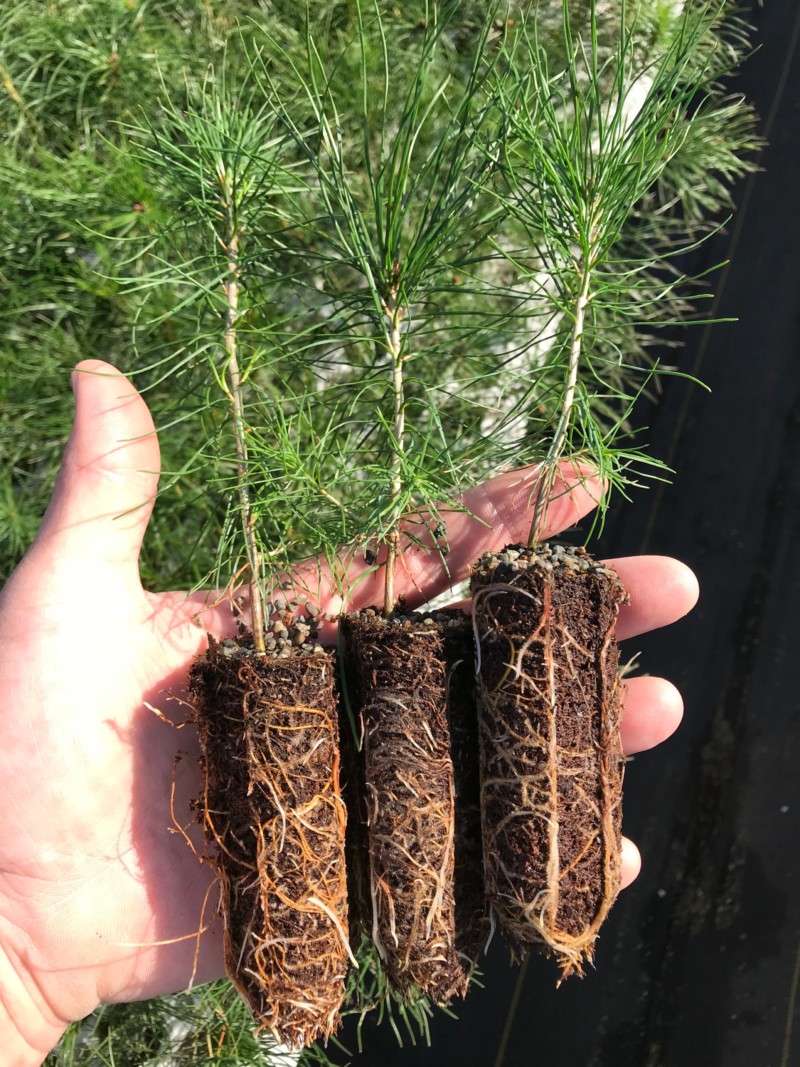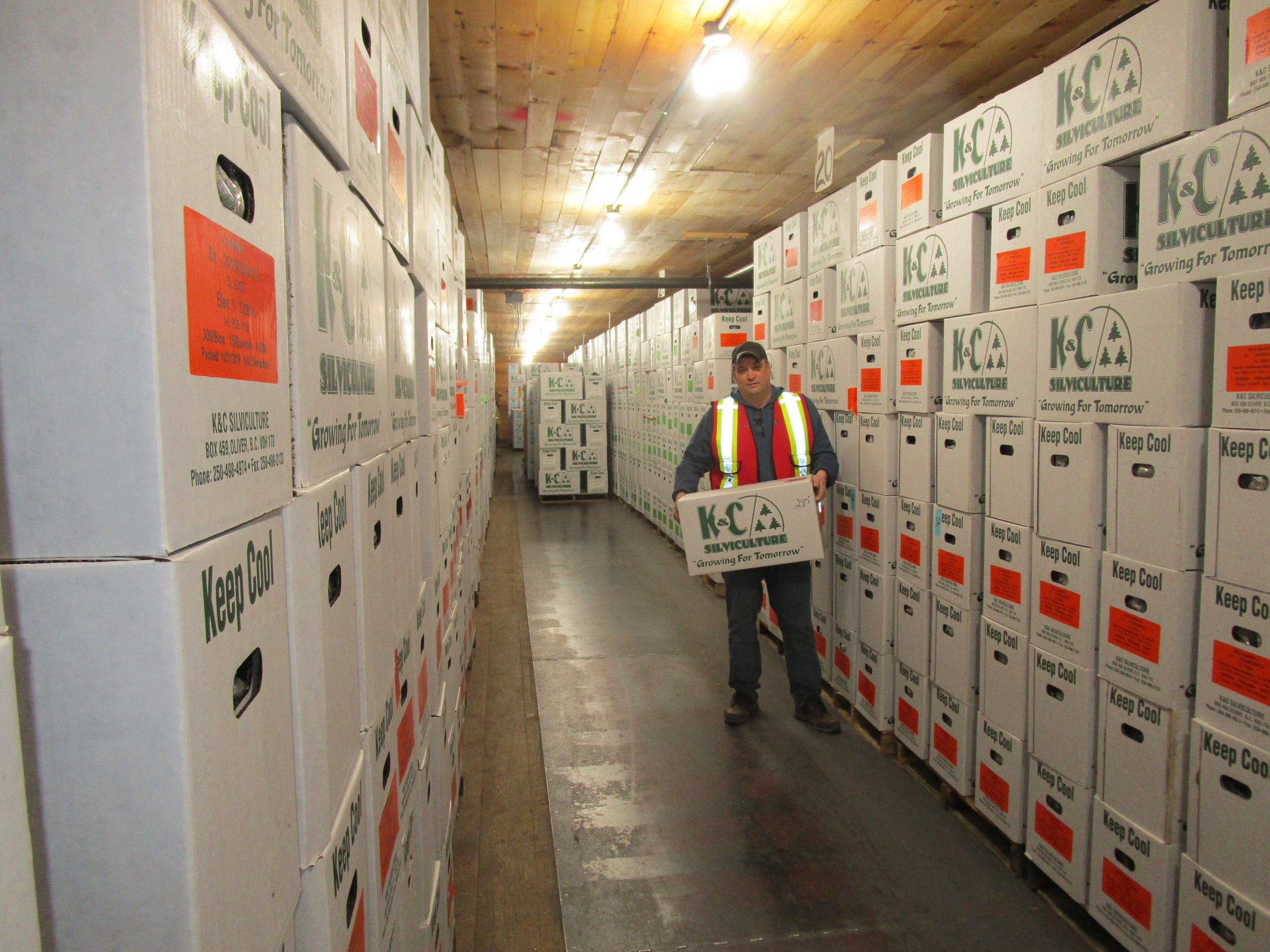
Drawing (on) a decade of climate change in the North
Artist Alison McCreesh’s latest book documents her travels around the Arctic during her 20s. In...
Communities and companies alike are racing to prevent the axe from falling on the largest tree planting program in British Columbia’s history as the COVID-19 pandemic disrupts an industry that typically deploys thousands of workers across the province each year.
This year was slated to see an increase in the number of trees planted, from roughly 250 million each year in the past decade to 310 million. Accomplishing this feat would require 5,000 seasonal workers to spread out across the province and work in isolated camps averaging 70 people or be housed in communities at motels or other facilities.
“This year was going to be the big leap for us. Well it still is the big leap for us. And it just got a lot harder,” said John Betts, executive director of the Western Forestry Contractors’ Association, which represents tree planting companies throughout B.C.
Now the season is on hold as the industry works on a plan to keep workers and community members safe.
On March 24, B.C.’s chief forester and assistant deputy minister Diane Nichols ordered a delay in the Interior planting season until May 4, even though the provincial government declared reforestation an essential service under its COVID-19 rules. The order to delay was made at the industry’s request to buy time to figure out what to do.
“The COVID-19 pandemic is creating huge uncertainty for everyone,” Nichols said in a statement, adding that “one of the main concerns for all parties is that the reforestation season proceeds successfully by implementing all reasonable measures to ensure the safety of workers and the communities they work in.”
Tree planting was already underway before the virus started to rapidly spread, and the work continues in coastal regions. But most of the seedlings — 230 million, or 75 per cent — are slated for B.C.’s Interior. That huge planting program may now be at risk.

Seedlings at K&C Silviculture, a major nursery operation in Oliver, B.C. Photo: Darcy McElveny

About $76 million has already been spent on growing seedlings in anticipation of B.C.’s most ambitious tree planting season on record. Photo: Darcy McElveny
Quesnel Mayor Bob Simpson said the health of his community depends on new trees. The consequence of extensive wildfires near his community in recent years, including the largest fire in B.C.’s history, is a “blown out” landscape of dead trees, he said. That, combined with the large mountain pine beetle outbreak and extensive logging, has altered water tables and set the stage for potentially devastating floods.
A key to rehabilitating those lands is to get new trees growing on them.
But Simpson acknowledges that people in rural and First Nations communities are justifiably concerned about people from outside coming in and potentially spreading the virus.
“The challenge for us is to figure out how to plan the congregating and marshalling of these crews in our community in a way that maintains their isolation from the general population,” Simpson told The Narwhal. “As a community, we owe it to ourselves to try and figure out what that could look like so that we meet two goals. One, we can enable the planting season. And two, we can still protect our community from people who are coming from away.”
Communities like Quesnel as well as the tree planting companies now have a bit of time to figure out what that might look like.
About $76 million has already been spent on growing seedlings, Betts said. The wages associated with planting those seedlings are easily double that, he added.
Rob Scagel, a reforestation consultant, said once the financial transactions between businesses in rural communities and the tree planters are considered, the economic value of this year’s planting season will exceed $220 million. But the big question is whether all or part of the planting season can go ahead given the delays and the extraordinary challenges posed by the pandemic.
The tree planting companies hope to exploit the one thing that typically defines the industry — isolation.
Usually, once planters are out in the field tromping through cut blocks, or logged-over areas, they are on their own for the day.
“They’re working by themselves, within 100 metres or so of the next person,” said Tony Harrison, part owner and director of Zanzibar Holdings, a tree planting company. “They’re working in isolation during the day, which is the norm, and there’s no COVID on the cut block.”
But isolating those workers during other parts of the typical work day will be onerous, as highlighted in a 12-page draft document being prepared by the Western Forestry Contractors Association to help guide companies should the planting season proceed.
The document stipulates that no one who has travelled outside the country will be allowed to plant trees without first self-isolating for three weeks. Everyone else will have to self-isolate for two weeks before going into the field. All workers will be required to file daily health logs that will be checked.
Workers will travel in small groups to and from work sites in trucks that are disinfected twice daily, Harrison said.
Betts said the groups will form “social isolation units” within the camp. In addition to travelling together, they will also eat their meals together. And they will not mingle with others in the camp. If anyone in the group gets sick, then they all go into isolation.
And the restrictions won’t stop there. Buffet-style eating at camps will be prohibited. Planters won’t be allowed to wash their own dishes, which will be done by dedicated kitchen staff instead. All “high-touch areas” in the camp — such as toilets, tables, rails, latches, switches, and door handles — will be disinfected with chlorine, hydrogen peroxide or ammonia twice daily.
Perhaps most onerous of all, no one working in the camps will be allowed to leave on their days off, a rule that will apply to crews housed in motels and other buildings in or near communities.
To limit the boredom that would normally be relieved by periodic visits to nearby towns, tree planting camps “will be equipped with communication, entertainment and wireless services to ensure that workers are able to maintain communication with their families,” according to the document.
But tree planters, who are used to the communal life and camaraderie of the camps, are already expressing concerns about the emotional toll such restrictions will have. On a Facebook group for tree planters, one planter notes:
“I am concerned about the toll on mental health for planters being forced to both work in an isolation environment and also not group together in camp,” James Colalilo wrote in one post. “Even providing amenities and activities for days off, I am worried it will not be enough to keep up morale in an isolation setting . . . after the incubation period has passed in properly isolated camps, crews should be allowed to interact in order to keep everyone sane and happy.”
Simpson believes there are at least three formidable hurdles to be cleared for the planting season to be salvaged.
First, health authorities must sign off on the industry’s proposed guidelines. Second, First Nations will have to be fully consulted and consent to the industry operating nearby, but not within, their communities.
Jordan Tesluk, a consultant to the tree planting industry on health and safety issues, said the latter point is essential. To alleviate concerns First Nations have expressed about the danger the virus poses to isolated communities, it’s essential that tree planters “avoid any and all contact with First Nations communities.”
The third hurdle is figuring out if there are places in or near rural communities where large numbers of tree planters could eat, sleep and shower while minimizing the risk of the virus being transmitted.
Simpson said an isolated recreation facility that is currently closed could be that place in the Quesnel region. It has ample parking, vacant land beside it and shower and laundry facilities.
“To me, that’s the kind of thinking we need to do as a community,” Simpson said. “We have an already closed space that could potentially accommodate the need to isolate these individuals and protect our community . . . [and] still enable a planting season to occur.”
Even if such arrangements are worked out, many of the trees slated for planting this year may not end up in the ground because the planting season has already been delayed.
For each week that planting is postponed, 15 million to 25 million seedlings will not be planted, Betts said.
Given the stringent restrictions that will be in place should the Interior planting season commence, Scagel believes “triage” will be necessary.
“The critical question is, what can we plant?” he said. “Are we going to plant 70 per cent to 80 per cent? And what are the critical sites that need to be planted?”
Scagel believes “candidate sites” include long-neglected plots of land that were never satisfactorily reforested following devastating insect attacks or that were burned in fires that in some cases wiped out young trees that had been planted only years before.
Betts warned that if the entire Interior planting season is scuttled, the result will be one of the biggest compost piles in history. The seedlings “cannot be brought back to life or put back into the freezer,” he said. “They simply will wind up being a tremendous waste.”
Meanwhile, the nurseries that grew all those tiny trees, which are now in freezers awaiting shipment, can only wait and see how things unfold over the next few weeks.
“I’ve been in this business for 20 years now — in Ontario, the U.S. and B.C. — and this is my first experience with something of this magnitude,” Darcy McElveny, manager of K&C Silviculture, a major nursery operation in Oliver, told The Narwhal. The nursery has more than 10 million seedlings in cold storage that could be at risk should the planting season be scrapped.

Darcy McElveny handles boxes of seedlings in cold storage at K&C Silviculture near Oliver, B.C.
Worse, should the pandemic stretch into the fall, it’s possible that not one but two seasons could be shot for nursery operators and tree planting companies.
“Regardless of what foresters ultimately do with the trees they have already bought, equal attention needs to be paid to nursery operations,” Scagel warned, noting that nursery workers, if they stay healthy, are supposed to sow another 296 million seedlings this year.
That is “an enormous amount of work that could be thwarted by an early fall rebound of COVID-19,” Scagel said.
Betts said the industry expects to hear soon from Minister of Forests, Lands, Natural Resource Operations and Rural Development Doug Donaldson on whether the industry’s proposed guidelines have the support of the ministry and provincial health officials.
Like what you’re reading? Sign up for The Narwhal’s free newsletter.
Get the inside scoop on The Narwhal’s environment and climate reporting by signing up for our free newsletter. On March 17, federal Conservative Leader Pierre Poilievre...
Continue reading
Artist Alison McCreesh’s latest book documents her travels around the Arctic during her 20s. In...

I’ve watched The Narwhal doggedly report on all the issues that feel even more acutely...

Establishing the Robinson Treaties, covering land around Lake Huron and Lake Superior, created a mess...
